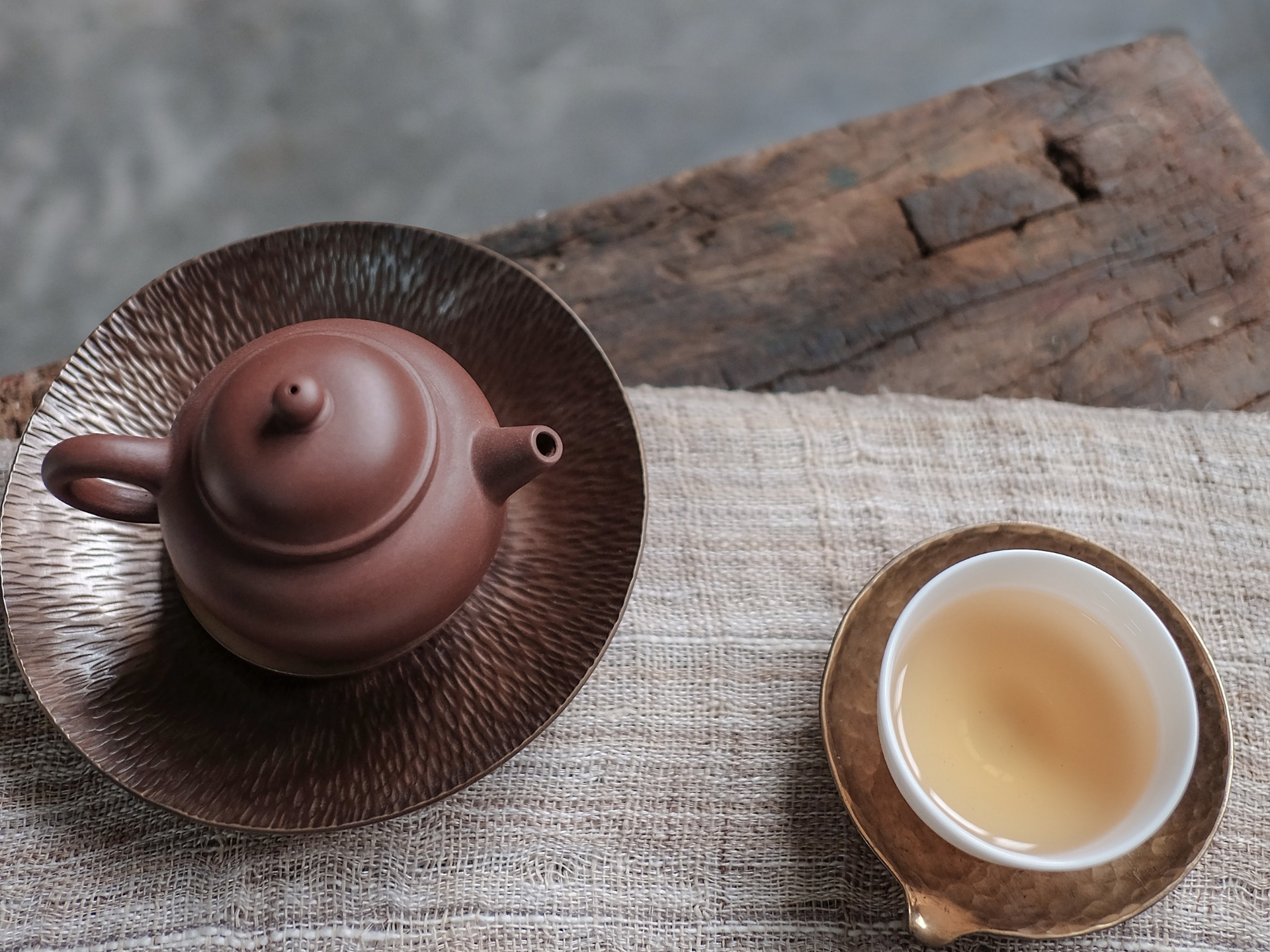Two ways to steep tea: Gong Fu Cha and Western steeping
Tea is an ancient beverage that has been enjoyed in China for more than 4000 years and in the West for almost 400 years. As you might imagine, preparation techniques have changed and evolved over this time. From boiling the leaves to beating them to grinding them into a powder to dissolve, to the more modern method of infusing them in hot water.
Introducing the two styles of steeping
These days, there are two different brewing techniques used most often for specialty tea: the traditional, eastern style of Gong Fu Cha, originating in China, and the Western steeping style, which began in England.
Gong Fu Cha
Gong Fu Cha translates as ‘the time for tea’. The Chinese symbols that represent Gong Fu Cha are the same as those used for martial arts, and they represent mastery of time and movement (1). Gong Fu Cha illustrates a study of tea with patience, dedication and practice.
The full Gong Fu Cha ceremony is wonderfully elaborate and includes many different tools. What is generally used on a daily basis is a simplified version of this, referred to as Gong Fu Cha ‘style’. Here’s how it works:
Vessel: small teapot or gaiwan (100 – 150mls)
Leaf volume: 5 – 6 grams
Steeping time: (rinse first) 20 – 60 seconds for the first two infusions; then incrementally increasing each steep by an additional 20 - 40 seconds until you reach 1 – 2 minutes.
Number of infusions: at least four but can be more than 10
All metrics can be adjusted to suit you and your tea.
Gong Fu Cha steeping can be used for all of the six types of tea. It is most often used for pu-erh and oolong teas which generally yield the highest number of infusions.
Western brewing
The traditional Western technique has seen us use a large teapot with a ‘teaspoon per person and one for the pot’ method. For specialty tea we use a more refined version of this approach.
Vessel: small teapot (130 – 150mls) or medium teapot (300mls)
Leaf volume: 2.5 - 3 grams for a small pot (if using a medium/large pot, use the ratio of 1 gram of leaf per 50 mls of water)
Steeping time: 3 minutes per infusion (give or take 1 min)
Number of infusions: at least two but can be more
This is suitable for all types of tea, in particular black and green.
At The Tea Curator, we generally have Western brewing instructions on our pouches. This is for simplicity’s sake as Western brewing is closer to what my New Zealand-based audience is used to. But of course, Gong Fu Cha style of brewing is always available.
Tea begs to be experimented with. So, it makes sense to try out the different steeping styles and see what suits you and your leaves. Play around with the parameters. If you like to have one to two cups of a specific tea each day, then Western steeping may be best for you. But if you have the curiosity and time to sit down for a focused tea session and want to see how the flavours evolve over many steeps, you’ll enjoy Gong Fu Cha. Or you can switch between both techniques depending on how much time you have for your tea ritual.
Once you get to know the world of specialty tea, you realise tea is intricate and complex and its nature is influenced by many factors. You can make generalisations about tea and attempt to define it, but there are always exceptions. While it can be constrained physically, metaphorically speaking, you can’t put tea in a box.
And in the same vein, there’s really no ‘right way’ to go about preparing your tea. It is helpful to have a good understanding about tea and steeping techniques, but then you can chart your steeping course in a way that suits your specific leaves, your personal taste and style and the time you have. Practice, experiment and enjoy the experience!
~ Anna
Learn more!
Watch this video to see Gong Fu Cha style brewing in action. Watch this video if you would like to see the full Gong Fu Cha ceremony.
Join us and build your tea and wellbeing wisdom
If you would like to improve your tea and wellbeing knowledge, sign up to our mailing list below (underneath the comments form). I'd love you to join our community.
Banner photo credit: thanks to 五玄土 ORIENTO on Unsplash
Citations:
(1) The Camellia Sinensis Tea House. (2014) Tea, Histories, Terriors, Varieties, New York. Print.


